Pharmacy Profitability in Challenging Times
Join us for an insightful webinar hosted by IPC and INMAR, where we delve into the pressing issues facing independent pharmacies today. Sam and Anthony discuss the financial pressures and operational hurdles independent pharmacies are encountering, with a focus on reimbursement and operational efficiencies. Learn how INMAR leverages healthcare technology to offer relief and solutions, including revenue cycle management and healthcare analytics. The key advantages of INMAR’s solutions in aiding financial reconciliation for independent pharmacies. Explore best practices and tips for managing drug returns, especially as the fiscal year ends, and much more.
Don’t miss this opportunity to gain valuable insights and practical solutions to enhance your pharmacy’s profitability in these challenging times.
Presented by:
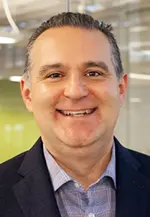
Anthony R. Garcia
Division Vice President, Healthcare Solutions
INMAR Intelligence
With over 21 years of healthcare experience, the past 18 with INMAR, Anthony currently oversees the healthcare field team that supports independent retail pharmacies for reverse distribution, compliance, automation and revenue reconciliation. Originally from Texas, he and his family live in Liberty, Missouri.
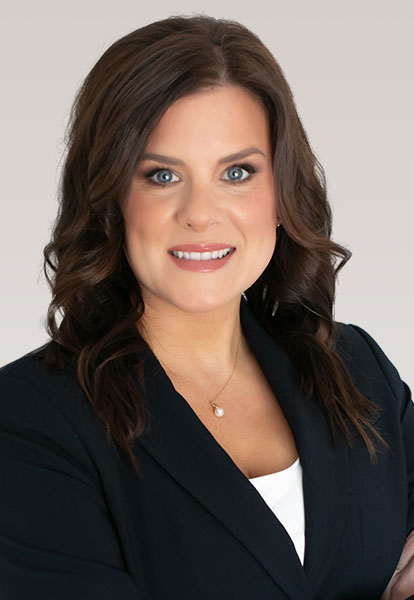
Samantha Pomeroy
Director of Pharmacy Services
IPC
Samantha Pomeroy is a pharmacy professional serving as the Director of Pharmacy Services for IPC. With a career spanning over 20 years working as a Certified Pharmacy Technician and Director of Operations, she brings a wealth of experience and expertise to her role. She tirelessly works alongside our members to identify and implement innovative business solutions that elevate their practice and enhance profitability. Her commitment to the success of community pharmacies is unwavering, and she finds fulfillment in providing personalized consultations to help businesses flourish.
Transcript
Samantha Pomeroy (00:00):
Hello everyone and welcome to IPC’s Vendor Advantage Network session today where we will be discussing pharmacy profitability in challenging times. My name is Samantha Pomeroy. I’m the Director of Pharmacy Services here at Independent Pharmacy Cooperative, and today I’m joined by Anthony Garcia, the Division Vice President of Healthcare Solutions with INMAR. Anthony, thank you so much for joining us today in our brief discussion to really help our members utilize technology, the data that they have access to, and ultimately take control of their business during some very difficult times that we’re facing right now and how they can remain profitable doing it. So thank you so much for joining us today.
Anthony Garcia (00:43):
Thanks for having me. Appreciate it.
Samantha Pomeroy (00:46):
Anthony, in case some of our members here at IPC are not familiar with INMAR, why don’t you take just a few minutes to kind of tell us a little bit about INMAR, your role at INMAR and that will lay the foundation for our conversation today and what your area of expertise is?
Anthony Garcia (01:04):
Yeah, absolutely. INMAR is a huge company, close to a billion dollars in revenue, and really you probably have dealt with INMAR and not even known it. We support the backend for a lot of manufacturers, retailers, as well as throughout the supply chain. So we like to say that if you’ve ever returned an item, you’ve ever filled a prescription or you’ve ever redeemed a coupon, I guarantee you we’ve handled that in some way on the backend. We’ve got a couple of divisions right now. One is in our media division, which focuses a lot on consumer and manufacturer relationships with customers. And then on our healthcare side, we do a lot of things from work with manufacturers all the way to individual dispensers. So I’ve been on the healthcare side for about, as the previous slide said about 18 years coming up in October. But specifically I work with what we call our hospital and indie retail teams to help support them in a number of different solutions, which face them from returns to recalls, regulatory compliance to revenue capture for prescriptions.
Samantha Pomeroy (02:27):
Okay. So I mean, you really do touch so many different areas of healthcare. Obviously I see here on the screen, knowing that you service over 50,000 pharmacies, that’s huge. I would say that you’re very familiar with what’s going on in today’s climate with our pharmacies and community pharmacy and really the industry at large. So I did see the article in Drugstore News that INMAR was mentioned in discussing some of the challenges that independent pharmacies are facing. So I want to talk about some of those. One obviously being reimbursement at this point, it’s like a broken record, but it’s our reality. So we at IPC are working every day looking for opportunities for our members to bring in additional cash revenue. Finances are tight for many right now, and they’re really looking for operational efficiency. So let’s discuss some of those obstacles that you’re seeing and really how INMAR has positioned themselves as a healthcare technology company to really provide relief in these areas for our members.
Anthony Garcia (03:37):
Yeah, absolutely. From a financial perspective, dealing and being in the backend for the largest reconciler by number of stores in the us, we’re able to see a lot of those trends in terms of reimbursement challenges and a lot of the new increasing regulations that create an impact for that. Obviously, we deal with a lot of our larger stores that may have a lot more personnel designed around capturing a lot of that revenue and ensuring that the payments are reimbursed at the contract level. And so what we’ve done in our lesson in dealing with a lot of those clients is say, listen, can we take something there and make it usable for an independent retailer for Sam’s pillbox as opposed to some giant mega store that’s publicly traded, but we can deliver some of those same insights in terms of reimbursements and challenges on applying for contract as well as even going after claims that haven’t been paid. So we see that and the impact that we can have in a pharmacy’s bottom line. The biggest way that we could help a pharmacy is through giving them visibility to make sure that they’re capturing everything from the prescriptions that they fill. You’ve got enough challenges out there in every other end of the business to not get every penny that you’re due on stuff that you’ve already done. That’s a critical component and really you can’t get out of the starting blocks and being successful if that’s still something that you’re struggling with.
Samantha Pomeroy (05:22):
Absolutely. So let’s talk about that a little bit, the revenue cycle management piece to what you do.
Anthony Garcia (05:28):
Yeah, it really has four components. Obviously the settlement of pharmacy claims is one big area. Contract management, as I said, making sure that if you’re owed $10 that you’re not being reimbursed $8 for that item. Highlighting those things for you. Analytics around that. Again, the advantage also of having the large number of clients is the ability to provide some benchmarking data and so that you know can grade yourself. Listen, I am doing as well as I can based on the information that I have. And then audit not just increasing the revenue but also reducing risks. Audits put you at a huge exposure when somebody comes in and looks back and audits that. And if you can avoid that scenario, you can certainly capture or avoid having to pay back funds at that point. In addition, we have services to address MAC appeals and exceptions management as well. But again, even if you just take the settlement of the claims and the contract management, those I think are two of the most basic functions that you really need to have tightened up in order to ensure that, again, that the bottom line is being met,
Samantha Pomeroy (06:48):
Right? No revenue management like this is truly crucial for pharmacy and data is the number one thing that I look at when consulting with our members around reimbursements. You have to know where you’re sitting. So having visibility and really clear insights will truly help them to make the financial decisions that they need to for their business. Are they able to add a clinical service to their pharmacy? Are they being able to do that? So that’s so important and it really looks like some of the solutions here provide great healthcare analytics for the pharmacy to be able to do that. So what are some of the largest benefits that you’re seeing in helping independent pharmacies with your financial reconciliation?
Anthony Garcia (07:35):
Yeah, so the 50% reduction in write-offs is huge. I mean, I would imagine that most of the pharmacies listening to this have an idea what that number is for them and just think about cutting that in half and what that would do to the bottom line. And then also improving by two days. The average DSO is another huge advantage. I mean, time is critical, time is money, and if we can increase the day sales outstanding or decrease that by two days, that’s a big deal. I mean, it may not seem like a lot, but that’s a critical component in terms of cashflow because we know that that’s a huge opportunity for that. So those I think are the two that I really wouldn’t want to highlight because it just avoids write-offs, increases revenue with our collection service, which also increases the day’s sales outstanding number and metro,
Samantha Pomeroy (08:37):
Right? We’re leaving no money on the table for sure.
Anthony Garcia (08:41):
Nobody can afford to do that. I mean, you and I walk down the street, we’re going to pick up a quarter on the side of the road. We can’t let any of that go.
Samantha Pomeroy (08:50):
Absolutely. No, I love that. Okay, so let’s talk about drug returns. Some pharmacies fiscal year in September. Do you see an increase in drug returns during this time of year? If so, is that the best practice? Can you give our members some tips on their workflow just to make sure they aren’t leaving money on the table with their drug returns?
Anthony Garcia (09:13):
Absolutely. First of all, we do, we see some flows, some increases around fiscal years, like September. We’ll also see a lot around the end of the year, and then a lot of times around an annual inspection, if a pharmacy has a board of pharmacy inspection coming up, then they’re getting stuff ready. And so we do see those kind of ebbs and flows in terms of, Hey, I’ve got this need to go out and do the return. The one advice that I would recommend to clients is that regardless of who you use for expired med returns, you need to make that a regular occurrence. And I know that it probably is the last thing on a pharmacist’s mind when they don’t even have time to go to the bathroom a lot of days, let alone think about sending expired meds back, but there’s so many manufacturer policies that restrict the time in which you can return product back.
Anthony Garcia (10:11):
And so you might have what we call apples rotting in the barrel creditable product that if it were returned in time, it would generate return credit for you. And if you wait too long, it winds up being non creditable. I mean, the manufacturers are not looking out for you in the independent pharmacists, and so you just need to make sure that you have a regular cadence we recommend quarterly that ensures that you’re capturing most of ’em. But the most policies are about 90 day return windows. And so if you do it every three months, then you’re going to be able to capture the most value for those returns. So that’s the first thing that I would recommend to anybody, make sure that it’s a regular thing and that you’re doing it quarterly. We’ve got onsite team that can go out and proactively schedule that. That takes it out of somebody who’s having to worry about remembering to do it. We also have an offsite team, so if you still want to be able to send it back on your own and do all of that work, we have an onsite team that’s regularly calling and to make sure that they’re reminding clients about that. But again, you use us, great. We’d love to have you, but you’ve just got to make sure that you’re doing it regularly.
Samantha Pomeroy (11:31):
Right. I’ve really been shocked when you and I have had conversations about our members and the dollars that they missed out on from just not keeping up on it. It’s substantial. So just looking here at the screen, I do see a difference in Mars return process versus maybe some other companies. Just kind of highlight that a little bit. What’s the difference in INMAR?
Anthony Garcia (11:56):
I think the biggest thing is that one of the advantages of being the largest in this space is that we have relationships and contracts where we are the actual returns company for a lot of manufacturers. So if you’re returning it on your own like the old school way or you’re using another reverse distributor, they’re going to send probably 80% of that product because it’s manufactured that we represent, it’s going to come to us anyway. That’s the reason I’m able to share returns data with you. For people that don’t use us for returns is because we wind up getting their product from whoever they’re using for returns. And the problem with that is a couple, number one, the time if you send it somewhere else and then they have to process it, request a return authorization, send it to us, it adds time to that. We just talked about how time kills returns.
Anthony Garcia (12:51):
And then the other thing is making sure that policies are updated and accurate. The manufacturers are not getting together and publish a book every month that says, here’s the latest policies, go get money back from us. But they do with us because we manage those policies. So if they make a change, if Pfizer decides to make a change in their returns policy, well we’re the ones that hold that policy. We know that change and we get that right away. So you go from a multi-step process that has the potential for error because of knowledge to a three step process where we process those drugs one time. We call it one touch in our system. And so that kind of increases the speed and certainly increases the accuracy in terms of returns.
Samantha Pomeroy (13:40):
No, that’s great. And before coming to know you, Anthony, I honestly didn’t know that, so I’m sure there’s quite a few of our members that don’t know that either. So that’s really good information. Okay. Here on the screen, we’ve got the on contract solutions that we have through IPC with mar. So can you just run through a few of these real quick?
Anthony Garcia (13:59):
Absolutely. We talked about those first two, our CM revenue cycle management. That’s reconciliation. That’s making sure that you’re getting every dollar that’s owed to you for every script that you fill. And then Rx returns, those are your expired meds. We also have a solution if you have the need for compliance with the DSCSA guidelines coming on November 27th, we’ve got a solution for that. We also have a component of that that provides USP 800. That’s the OSHA regulation around making sure that you’re handling hazardous workplace products correctly. We’ve got that solution. Consumer drug takeback, those are the kiosks where people would come in and bring their unused patient medications for that. There are some states, there are about seven of them kind of on the east, northeast and out west, and then Illinois coming up where they are paid for by the manufacturers clients they charge to Absolutely. Clients in those states don’t even have to pay for it. They can sign up and get a box at no charge to them. And then we also have formats just if you need a cushioning mat to stand on or you want a new logo mat with Sam’s Pillbox logo as you walk in, we’ve got the ability to do that as well.
Samantha Pomeroy (15:27):
I like the ring of that. I’m not going to lie. Sam’s Pillbox. That’s great.
Anthony Garcia (15:30):
I just remember the pharmacy that I can remember as a kid was Joe’s Pillbox. So that’s always stuck into my head when I think about a pharmacy and an independent retail pharmacy. I think a pill box. So it had a nice, it was an old school store with a soda fountain and the best as well. So absolutely. I used to love, when I started out in the business, I started out as a field rep out in West Texas, and there were a couple that were still out there where I tried to make sure that I scheduled to go visit those customers at lunchtime so that I could make sure to grab a hot dog straight off of the grill.
Samantha Pomeroy (16:17):
Oh, absolutely. They’re still there too
Samantha Pomeroy (16:20):
Again, Anthony, thank you so much for taking the time to talk to our members today and really bring forth solutions to help our members to tackle some of these challenges that they’re facing kind of head on, and really for being that industry expert in and that partner for IPC and our members as well. So we really appreciate it. If you have any questions, please don’t hesitate to reach out to us via our website. You can scan the QR code here on the screen and that will take you directly to our INMAR landing page and my contact is there as well. So again, thank you Anthony, and thank you to our members. We really appreciate it,
Anthony Garcia (16:57):
Sam. Appreciate you having me. I appreciate the partnership with IPC. Thanks.
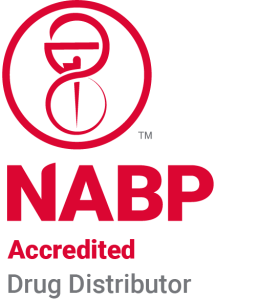
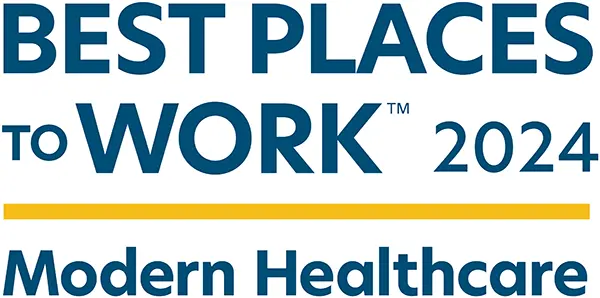




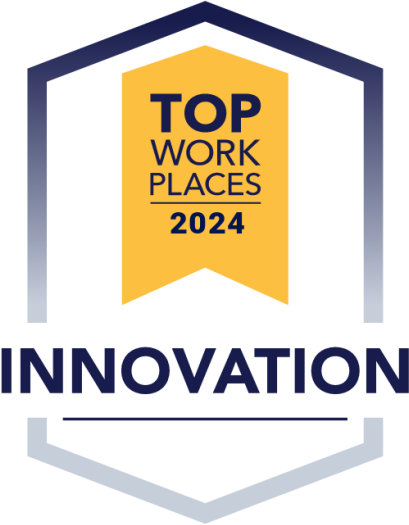
 by
by